When you love something, you want to protect it. That is one reason why these artists want you to love the places they love.
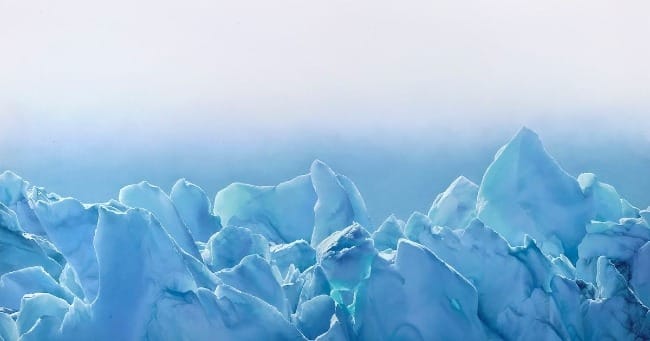
Icebergs
Artist Zaria Forman first became enraptured with icebergs and glaciers when she travelled to the Arctic and specifically to the North Pole, with her mother, Rena Bass Forman, a photographer who created sepia and black and white photographs of wonderful and wild places. Since then, Zaria's love of icebergs and glaciers has deepened and that love, intensified by the devastation of ice due to climate change, forms the impetus for her paintings. She wants to infect us with a passion toward icebergs and glaciers and that cold, deep blue beauty so that we, too, will love them and want to protect these awe-inspiring places that we may never experience except through pictures. Using the special ability that art has to tap into people's emotions, Zaria aims to move us to action since, and as she said in a recent webinar, "people take action and make decisions based on their emotions more than anything else."
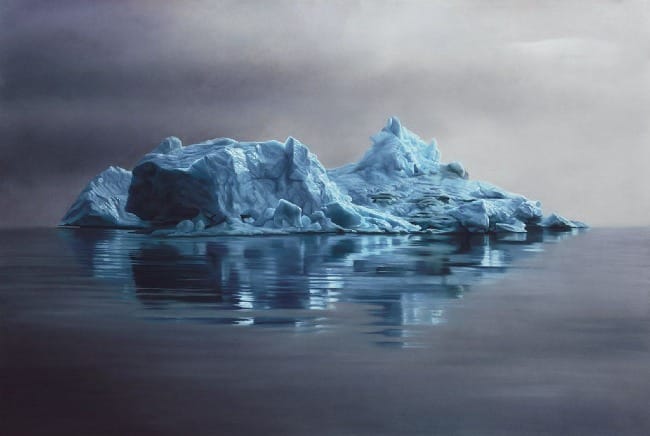
She paints her large-canvas landscapes in intricate detail, so that, although we may never experience Greenland or Antarctica firsthand, through her art we can in some way experience them as if we were there. Her iceberg paintings are so realistic that you can almost feel the blast of cold air from them and they are so accurate and detailed that NASA invited her to come along on Operation IceBridge, an airborne science mission that maps ice changes at both poles. She was invited to document the changes in ice with her paintings, thus spreading the data of climate change through the medium of art.
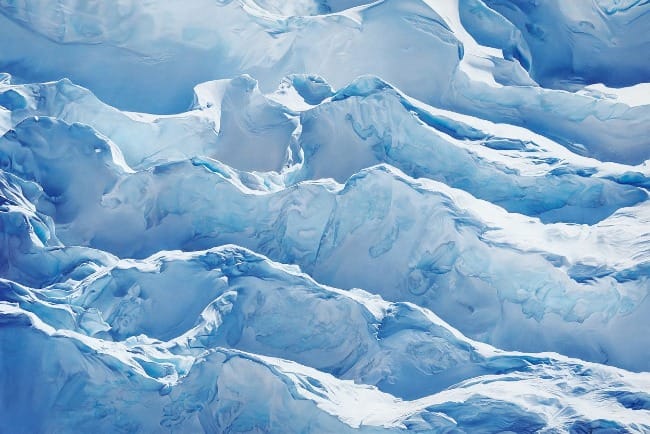
Zaria's painting method is fascinating as she draws her hyper-realistic art with her fingers and palms, no brushes, just gloves, pastel paint, chalk, and the paper she smudges the pastel paint onto. At the end of this post, you will find a link to a video of her in action. She paints because, as she says, "art is the sharpest tool I have" in the fight against climate change.
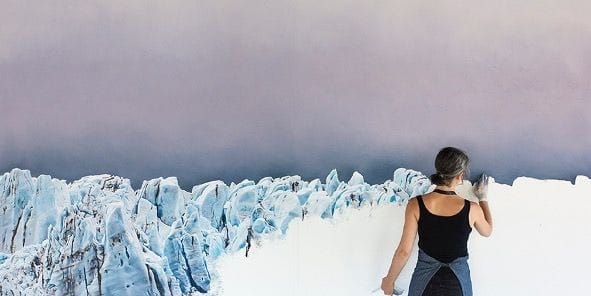
Islands
Judy Mitoma, former director of The UCLA Center for Intercultural Performance, fell in love with a very different place. It was the music and dance of Pacific Island cultures which first drew her in, when, as a graduate student, she attended the 1980 Festival of Pacific Arts in Papua New Guinea. This love of Pacific performance arts, along with a deepening concern about climate change, led her to organize a 2011 spoken poetry and dance project called the Water Is Rising, with performers from the South Pacific islands of Tuvalu, Kiribati, and Tokelau. She chose these islands both because their music resonates very deeply with her and because they are some of smallest and most vulnerable countries in the Pacific. As low-elevation coral atolls, they are most susceptible to the first dangers of climate change.
In the same way that Zaria Forman paints icebergs to infect us with a love for them, Judy Mitoma's goal in bringing these performances from Tuvalu, Kiribati, and Tokelau was to share the natural beauty and rich cultures of these lands with the audiences they performed for so that they, too, would come to care about these special places.
I first heard of Tuvalu through my father, who as part of the Construction Battalion of WWII, built airstrips on these islands. Many of my father’s memories of wartime were dark and he was reluctant to talk about much of his experience, but he fell in love with this land and people. He especially loved to tell stories of the place and people of Funafuti, an atoll of Tuvalu. He visited and loved many wonderful places in his 101 years, but his deep love of this place was never displaced.
The 2011 Water is Rising project spoke of hope and faith through sung poetry, movement and vibrant rhythms, while conveying the harsh reality of the global crisis. One of the questions performers posed to audiences was, "This World of Ours, Does not feel steady, We keep rotating, Oi! What will happen to us?"
Watching a video of one of these performances brought back to me my dad's descriptions of the people: their cheerfulness, their musicality, their hospitable welcome, the way they fit with their place. Although the lyrics were untranslated, I could feel their joy, and was able to better understand my dad's affection. Accompanying the joy within the performance, is the sharp and real awareness of danger. As Mikaele Maiava of Tokelau explains, “Losing a home, I can assure you, is not the same as losing a land. Losing land is losing culture, losing your identity, losing almost everything that is dear to you.”
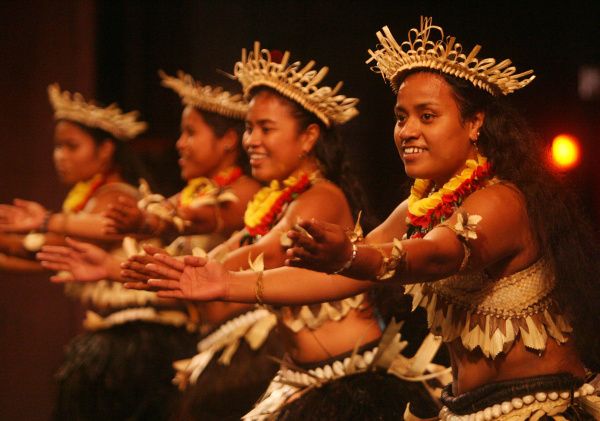
The dances and spoken poetry tell of fishing expedition, warriors, traditions, love, and determination. The islanders tend to frame themselves not as victims, but as warriors fighting for what they love with the sharpest tools they have, in this instance their ability to infect others with a love for a place and people that most people have not and probably will not ever visit themselves.
Speaking for myself, it is unlikely that I ever will be able to visit Antarctica, Tuvalu, Kiribati, or Tokelau (although exposure to this art has certainly increased my desire to do so). But, even if I never personally go to any of those places, this art had helped me know how special they are and increased my desire to protect them from the dangers threatening them. On a very small scale, at the very least, the artists have succeeded in their goals.
Watch a video of one of the 2011 Water is Rising performances through this link.
Click on this link to see a video of Zaria Forman painting and here to see more of her work.
Reflection Questions: Is there a particular place on this earth that you particularly love? If that place was in imminent danger, what would you do to try and protect it?
Louise
You can contact me directly at info@circlewood.online.